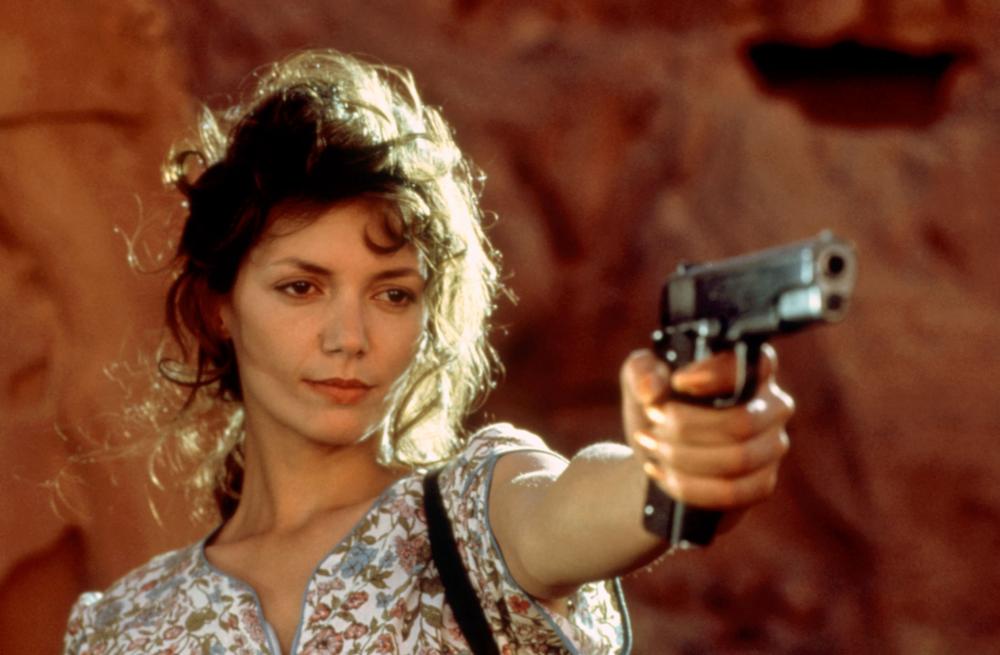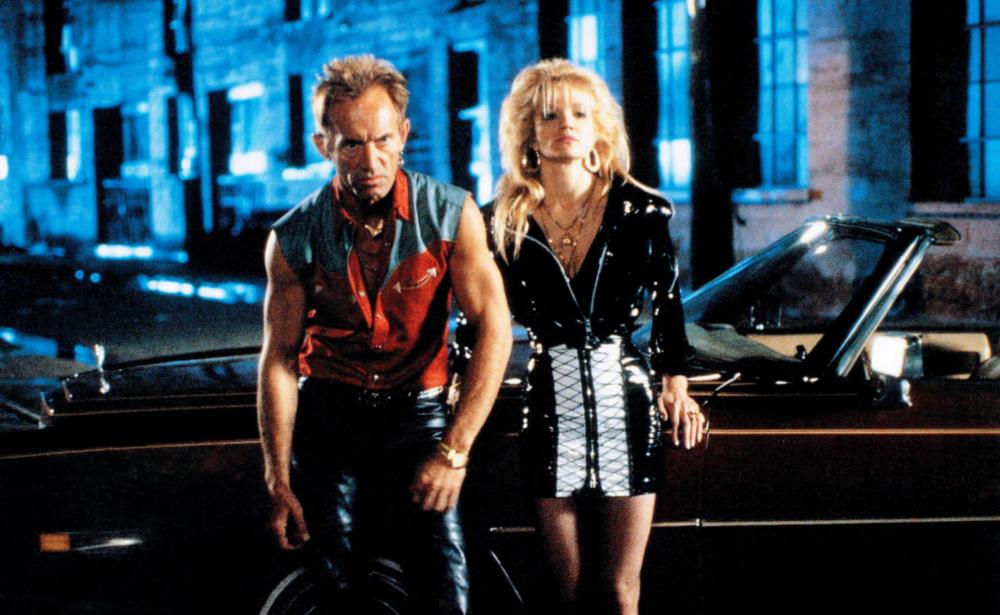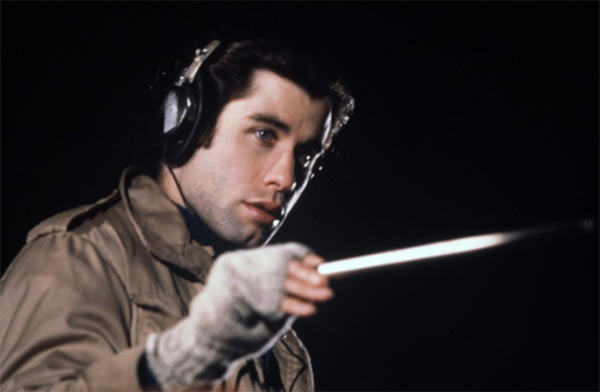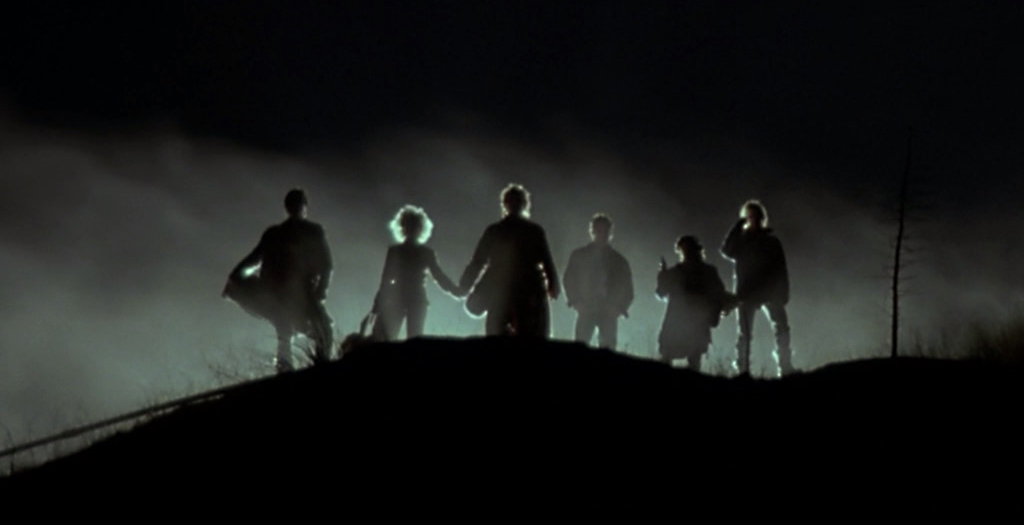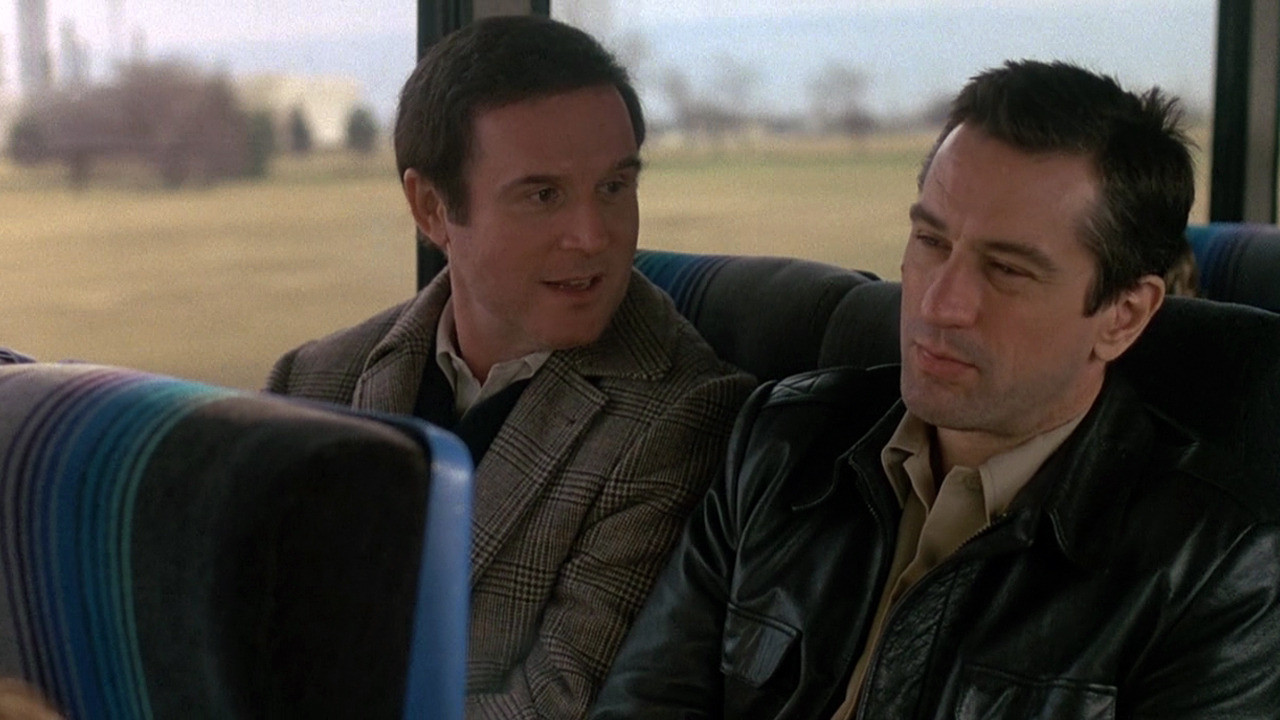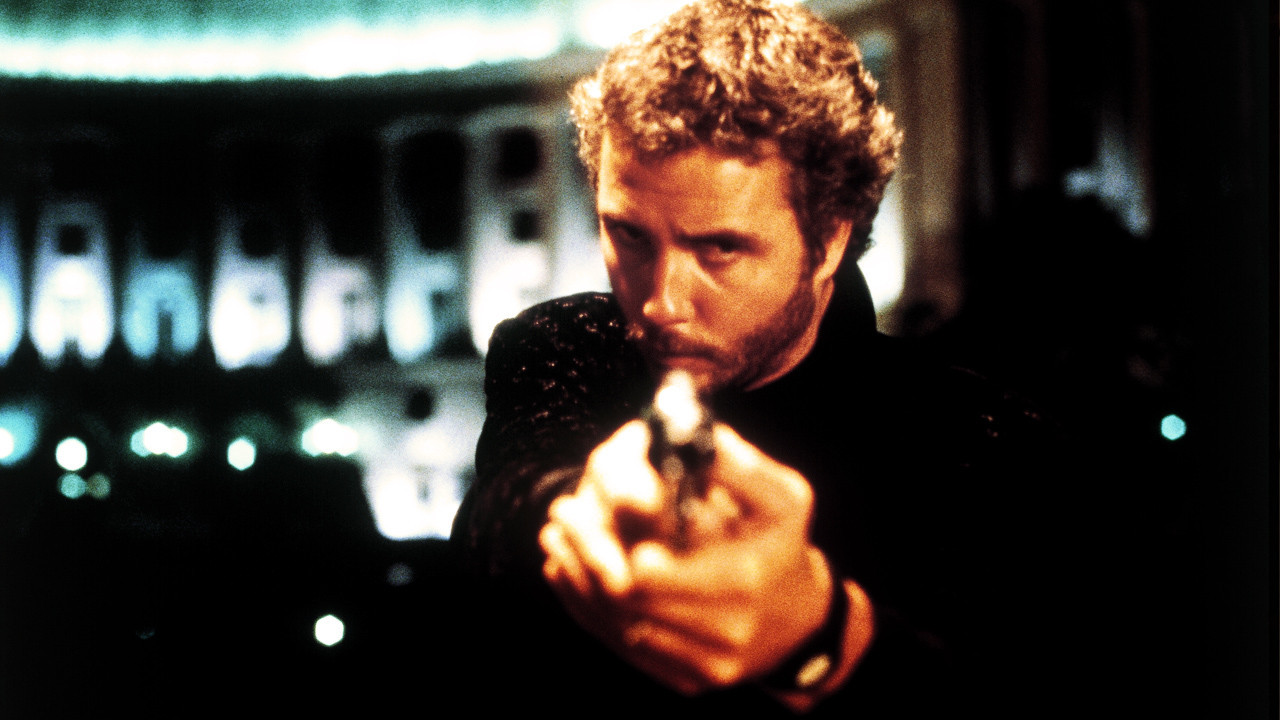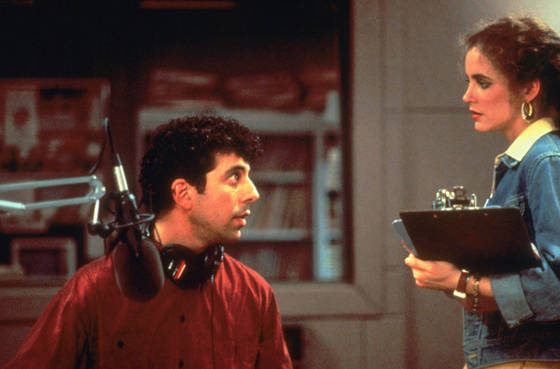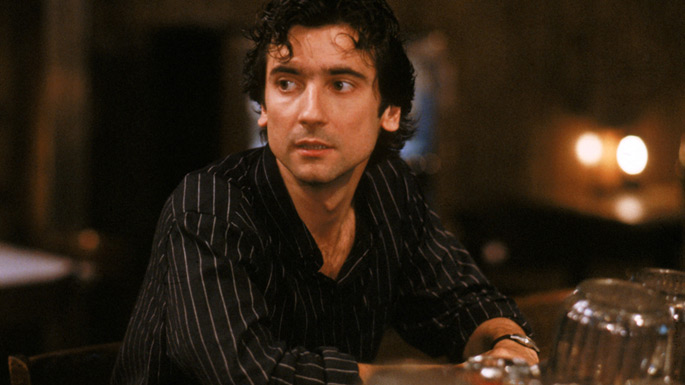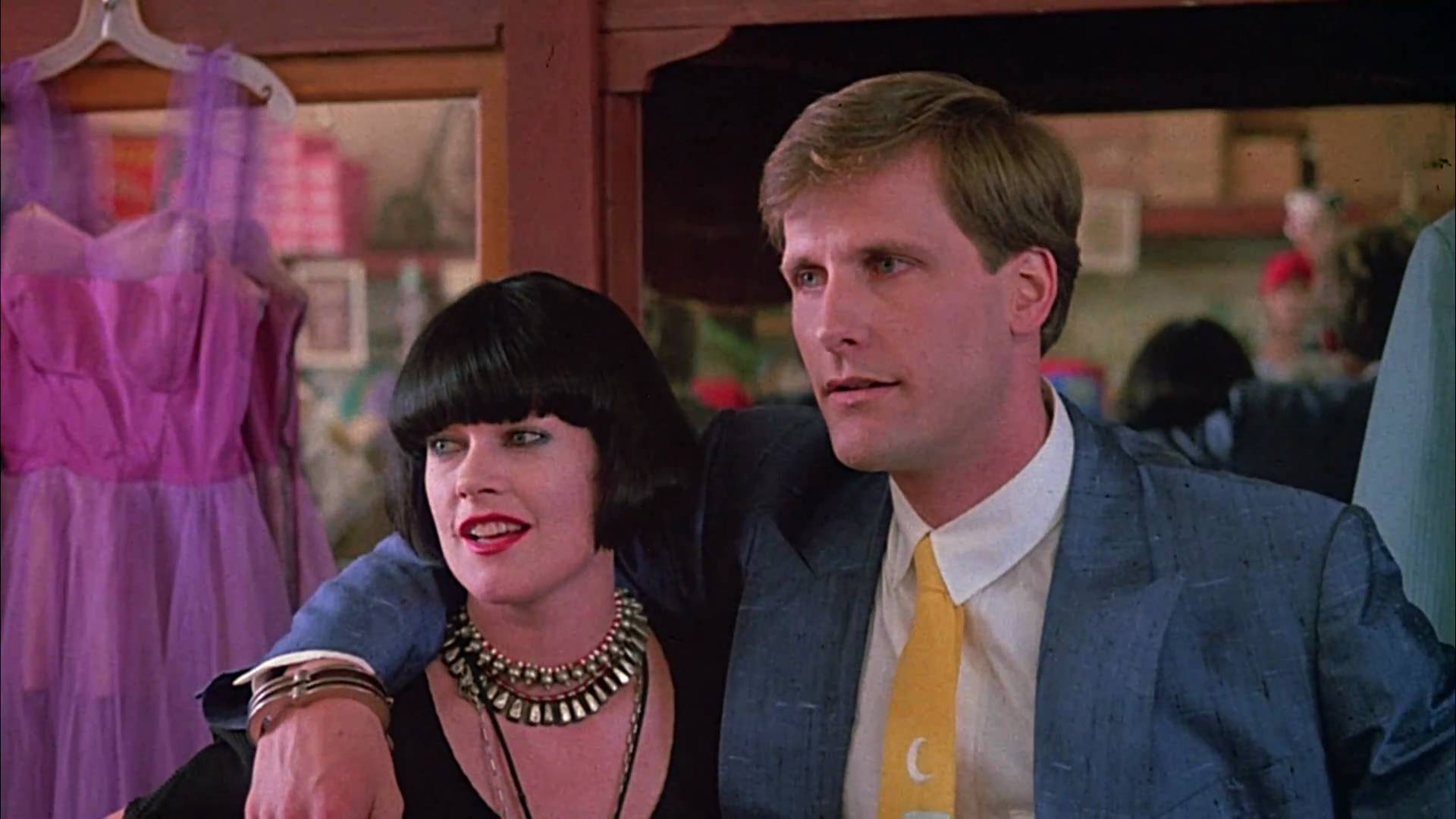10. Kill Me Again (1989)
Val Kilmer, Joanne Whalley-Kimer, and Michael Madsen all star in John Dahl’s fantastic modern noir thriller, Kill Me Again. Aside from the pleasure of seeing all three actors in early (and thrillingly down and nasty) work, the film is also an expertly crafted thriller that belongs in the same category of quality and respect as Dahl’s other noir thrillers, Red Rock West and The Last Seduction,
Kilmer plays a down on his luck private investigator who needs fast cash. (Un)luckily for him, Whalley-Kilmer shows up with just the right proposition: she’ll pay him all the money he needs to help her fake her own death and let her disappear forever. Needless to say, all goes to hell, and Michael Madsen shows up to do what Michael Madsen does: some really mean, really angry, really sarcastic, and really sadistically cool things.
Kill Me Again is a blast from start to finish. It’s the kind of twisted, dark, and quality fun that just doesn’t seem to be getting produced much these days.
9. Johnny Handsome (1989)
Like Friedkin, Walter Hill is another director who, overall, just couldn’t win in the eighties, in spite of the fact that he was spitting out some of the coolest and most stylish action films around. Granted, his more standard releases like the 48 Hours films and Red Heat had garnered enough dollars and clout to keep his career going for a while, but his best work, sadly, was unable to keep up with the mainstream audiences of the time.
Coming off the cult success of the seventies The Warriors, the eighties saw Hill release quite a few great films that most people never really heard of: Streets of Fire, Crossroads, Extreme Prejudice, and, of course, Johnny Handsome name just a few of Hill’s unsung greats. They’re all gritty, explosive, honest, uncompromising, fun, and tragic on (sometimes highly) varying levels.
Johnny Handsome is arguably Hill’s best and most mature work as a director. It’s simply told, highly moving, and tragically satisfying. Basically, it’s The Elephant Man as an action film: Mickey Rourke (in a predictably great and vulnerable performance) is a highly disfigured criminal who is double crossed by his partners in a bank robbery.
In prison, he is met with a kind doctor (Forrest Whittaker) who gives him a new face and a new life. The only problem is, Johnny’s still Johnny and immediately plans to exact revenge on those who wronged him.
Ellen Barkin, Elizabeth McGovern, Morgan Freeman, and a tightly wound Lance Henirksen round out the solid supporting cast, making Johnny Handsome something much more special and unique than the standard eighties action fare it is often mistaken for.
8. Blow Out (1980)
Okay, so it’s got a recent fancy Criterion release. Quentin Tarantino’s been calling it one of his three favorite movies of all time for decades. Critics and audiences have both, over time, hailed Brian De Palma’s Blow Out as a cinematic masterpiece. So, why is it considered underrated?
Because, sadly, it’s still a widely unseen and unknown film that has yet to get the credit it deserves for the influence it’s had on filmmakers for years. This is largely due to the fact that it is directed by Brian De Palma, who has somehow ridden the fine line of cinematic master and talentless hack in the eyes of critics and film enthusiasts alike for decades.
There is no doubt that De Palma is a director who is, at his best, ahead of his time visually and, at his worst, can awkwardly stage his scenes to the point of farce. “Operatic” doesn’t even begin to describe De Palma’s often melodramatic, overtly slow motion, sometimes surreal depictions of the events in his films.
“Hitchockian” is one way to explain De Palma’s visual and emotional flair in his work, but that doesn’t quite do it full justice. De Palma’s style is unmatched. It’s unlike anyone or anything else. It can induce awe, it can induce giggles, but it is undeniably his own and, to put it simply, sometimes it works and sometimes it doesn’t.
Blow Out is the antithesis to the DePalma who made Femme Fatale, Raising Cain, Body Double, Bonfire of The Vanitites, Casualties of War, or even Dressed To Kill. While all of these could be considered fine films by De Palma enthusiasts, the one thing they all lack that Blow Out retains (like his best work in The Untouchables, Scarface, or Carlito’s Way) is a sense of purpose.
Much of De Palma’s career feels like an (often brilliant) exercise in style. Blow Out, while heavily exercising such style, raises above the majority of DePalma’s cannon by finding a very human, disturbing, and tragic theme underneath its thrilling, gorgeous, and spectactular surface.
John Travolta stars as a movie sound man who accidentally records an assassination attempt, then gets caught up in trying to protect himself, an innocent witness (Nancy Allen), and find the truth of the case. The story isn’t particularly original or interesting, but, as is often the case with De Palma, that’s hardly a concern. In a DePalma movie, it’s rarely what’s going on that matters, but how it’s being presented.
Brian De Palma’s time of true appreciation may never come, and that could very well be because he has created a number of spectactular flaws within his career. The risks he took in creating those flaws, however, cannot be taken for granted in helping to lay the foundation for some of his most beautiful, disturbing, and near-pefect pieces of filmmaking he’s created. There aren’t many Blow Out’s in his (or anyone’s) career, but we can’t forget how spectactular the few that exist truly are.
7. The River’s Edge (1987)
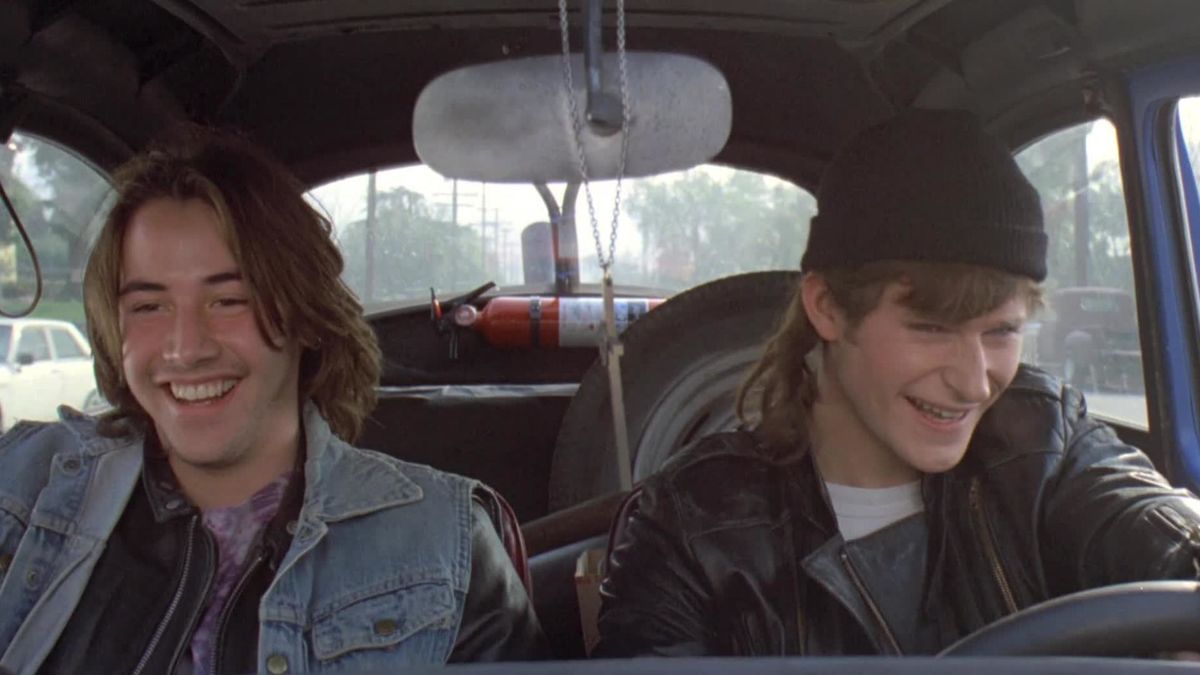
Keanu Reeves, Ione Skye, Crispin Glover, and Dennis Hopper headline a fantastic cast in Tim Hunter’s highly disturbing film about pathologically apathetic youth. A young girl is murdered by a river, most of her high school friends know about it, and only one or two of them struggle with the moral weight of informing the authorities.
Shockingly based on a true story, The River’s Edge is an overshadowed great that probably would be remembered more prominently had David Lynch and Mark Frost’s Twin Peaks not completely overshadowed it with a similar story and themes just a few years later. Powerful, strange, and unforgettably shocking, The River’s Edge is a film worth examining and revisiting regularly for years to come.
6. Near Dark (1987)
Director Kathryn Bigelow’s part-western, part-vampire thriller, and part-modern noir is, if nothing else, a masterpiece in extreme tonal and genre-shifting. From Dusk TIl Dawn and The Lost Boys alike both owe a far amount of debt to this crazy, somewhat comical, and slightly horrifying modern take on vampire lore.
A lonely teenage kid joins a charismatic gang of traveling vampires. The boy’s farmer father soon has to track him down and try to save him from an eternity of damnation. Adrian Pasdar, Tim Thomerson, Lance Henriksen, Bill Paxton, and Jenette Goldstein all give memorable, highly entertaining performances that, along with Bigelow’s ingenious filmmaking, elevate B-movie ideas into an A-movie production.
5. Midnight Run (1988)
Overshadowed by all the eighties buddy action movies that were released either shortly before or after, Midnight Run has always had a raw deal because, while it is certainly known and respected, it has never truly been regarded as the absolute classic it actually is. Let’s face it, Robert De Niro and Charles Grodin as Jack Walsh and Johnathan Mardukas are the best odd couple since Jack Lemmon and Walter Matthau.
Grodin is an eccentric, manipulative con man with a heart of gold and De Niro is a bitter, beaten down bounty hunter with a heart of gold. When De Niro is forced to track down Grodin and take him on a cross country road trip, Midnight Run truly becomes the best of its kind at the best of its time: an eighties action buddy road trip movie that makes you believe the two characters at the center of all the chaos could actually find a way of relating to and caring about one another.
The action is fun, the characters are real, and, yes, above all else, you actually belive Grodin and DeNiro could reach the very touching and very real bromance they achieve by the film’s end. We all love Lethal Weapon, but Midnight Run always deserved to be so much more than the cult version of it.
4. Manhunter (1986)
Michael Mann’s underseen adaptation of Thomas Harris’ novel Red Dragon is actually first film to feature the esteemed character of Hannibal “The Cannibal” Lecter on film. The character, of course, was later brought to world wide fame through Anthony Hopkins’ portrayal in the not-really-connected sequel The Silence of the Lambs.
Brian Cox does the honors of playing the man-eating doc this time around and gives us a wonderfully cold, terrifying, and much much less comic portrayal than Hopkins’ iconic and entertaining performance.
Mann’s film is very seeped in the eighties, with a highly synthesized score, deeply saturated colors, and a rocking end credit sequence that makes you feel like everything is going to be alright in the hands of your well-groomed and perfectly permed hero (in this case played by William L. Peterson).
All those cliché’s aside, what Manhunter does expertly accomplish is a tight thriller with a complex character who has to drive himself insane to save other people’s lives. Atmospheric, moody, and made with the perfectionism that has come to define Mann’s work, Manhunter is a forgotten masterpiece of a movie overshadowed by another masterpiece that, while not necessarily a better film, certainly had a much better case of timing.
3. Talk Radio (1988)
One of the few Oliver Stone films in the eighties to not make a splash (or cause some severe controversy) is also one of his most simple, mature, and character-driven works. Based on Eric Bogosian’s (who also stars in the film) one man show, Talk Radio is an intense, claustrophobic exercise in filmmaking that Stone expertly and flawlessly pulls off. It’s refreshingly to see the grandiose and over-the-top filmmaker limit himself and just focus on a human face, voice, and character for two hours.
The result is one of the directors most unknown and underappreciated efforts. Largely written off even by Stone himself, Talk Radio is an uncompromising and ugly look at popular radio host (Bogosian) who owes all his success and fame to an audience he fears, pities, and despises.
During press for the film years ago, Stone made it abundantly clear he had nothing in common with the lead character and felt disconnected to him. Perhaps, for argument’s sake, the opposite is true, and one of Stone’s most undervalued efforts is also one of his most (secretly) personal.
2. After Hours (1986)
There is a little-known fact about why Martin Scorsese made After Hours, the absurd story of a man trying to get home during a nightmarish New York evening: Scorsese spent years trying to get his passion project, The Last Temptation of Christ made.
Obstacle after obstacle prevented him, and, after years of frustration and many false starts, he finally threw his hands up in the air, found this “small” and insane script, and decided to vent all his frustrations into getting Last Temptation made by putting all his pain and frustration into Paul Hackett (Griffin Dunne), the pathetic yuppie who just wanted a night on the town but now can’t get himself home.
That desperation, pain, tension, and just plain nightmarish comedy of errors that Scorsese channeled into After Hours is one of the most suspenseful, strange, surreal, and Kafkaesque experiences ever put on film. It’s a comedic roller coaster, a nightmarish thrill ride, and a desperately absurd tale of a man who just wants to have something in his life, for once, work out the way he wants. It’s a feeling we can all relate to…
And the happy ending to it all is that Scorsese did get to tackle his beast shortly after After Hours was completed, and The Last Temptation of Christ was finally made. Whether or not Paul Hackett ever made it home, however, still remains a mystery.
1. Something Wild (1986)
Like Blow Out, Something Wild has found more of an audience and more respect today than it ever did in its original release. It now has its own fancy Criterion Blu-ray release. Beloved filmmaker Paul Thomas Anderson has gone on record on numerous occasions declaring his love for the film. And, above all else, it will always go down in history for being the first crazy film to house the first full on crazy Ray Liotta performance.
Jonathon Demme’s masterpiece didn’t exactly go unnoticed at the time of its release. Critics loved it, it got a few Golden Globe nominations, and stars Melanie Griffith, Jeff Daniels, and Liotta all soon went on to bigger and better paying films. However, that still wasn’t quite enough credit for such a unique and colorful film.
Aptly titled, Something Wild is a ride that gives us everything the eighties were all about: sex, violence, drugs, consequences, secret lives in small towns, hidden personalities behind smiling faces, and great pop music to score every bit of it in the background.
Something Wild is a quintessential eighties movie for more reasons than can feasibly be listed. It is a pure product of its times that could never be reinvented, and a pure piece of thrilling, brilliant, and one of a kind American movie entertainment.
Author Bio: Matt Hendricks is an independent filmmaker with several projects currently in development.
